- Home
- >
- Preservation Archaeology Blog
- >
- On the Trail of Trails: A Dialogue
Aaron Wright, Preservation Anthropologist
(September 26, 2023)—Archaeology Southwest is, of late, blazing trails in the Archaeology of Trails! Aaron (AW) has been documenting traces of ancient trails in present-day southern Arizona since 2006. In 2000, John (JRW) started “working backward” from topographical parameters for pedestrian travel below the Mogollon Rim (literally, places people could reasonably traverse on foot) to search for interregional travel routes. In light of some of our recent research and reporting—an article in American Anthropologist, work on the Komadk Trail—we wanted to share with you some ideas about the challenges and prospects for doing trails archaeology.
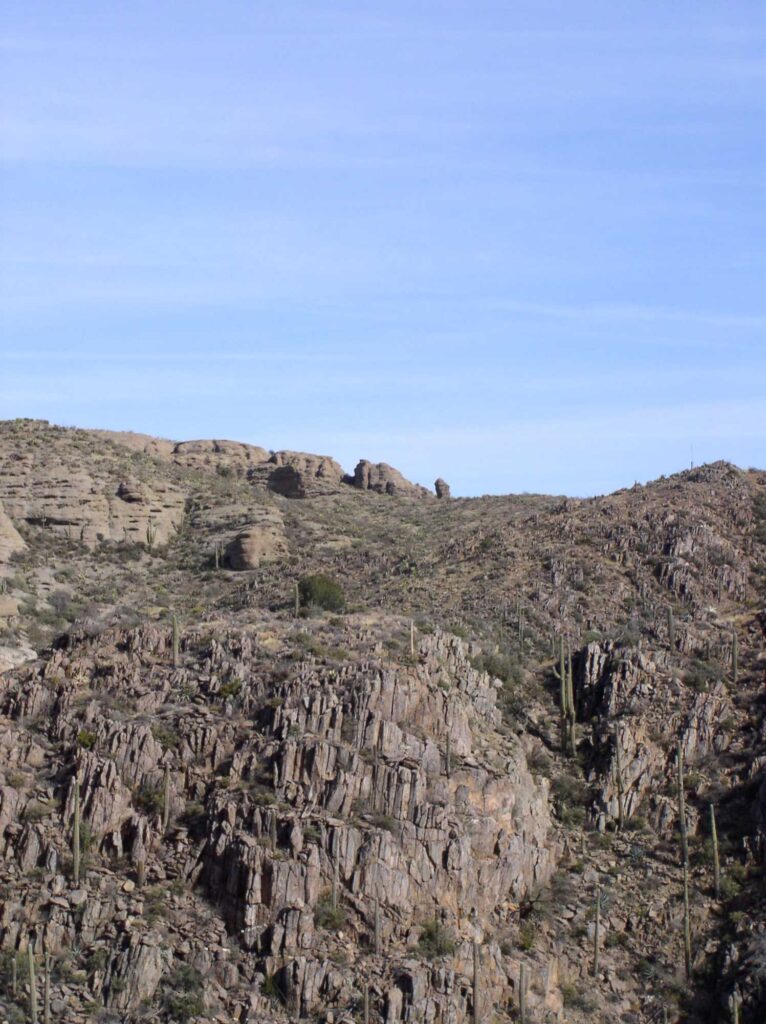
Why Should Archaeologists, Especially Those Concerned with Preservation, Care about Trails?
JRW (John Welch): Trails mean many things to many people. Only a bit more than a century ago, pedestrian-equestrian trails were the dominant and primary mode of terrestrial travel and transport across the planet. Until the rise of the automobile, the vast majority of people who had someplace to go beyond their home communities did so on trails.
This central reality of pre-industrial human social and cultural development has received scant attention. By definition all trails connect communities and places, so they are fully worthy of close study. Closest to home at Archaeology Southwest, trails are the mechanisms that enabled initiation and operation of the social networks under investigation by cyberSW.
AW (Aaron Wright): Trails can tell us a lot about the people who use them, in the past as well as the present. Rather than speculate about the ebb and flow of life from relatively stationary archaeological sites, trails archaeology allows us to chart the movement of people, goods, and information literally on the ground.
Archaeologists have posited countless interpretations about how things got where they were ultimately found, how people and places were connected or not, who were friends and who were enemies, and so forth. Trails archaeology enables the reframing of these sorts of interpretations as hypotheses, and then the testing of those hypotheses with data from actual trails. Moreover, trails literally materialize the connectivity of people across distances and among disparate places. Trails can show how information and items moved, approximately when, and how long it took. They are utterly integral to pretty much every type of landscape archaeology.
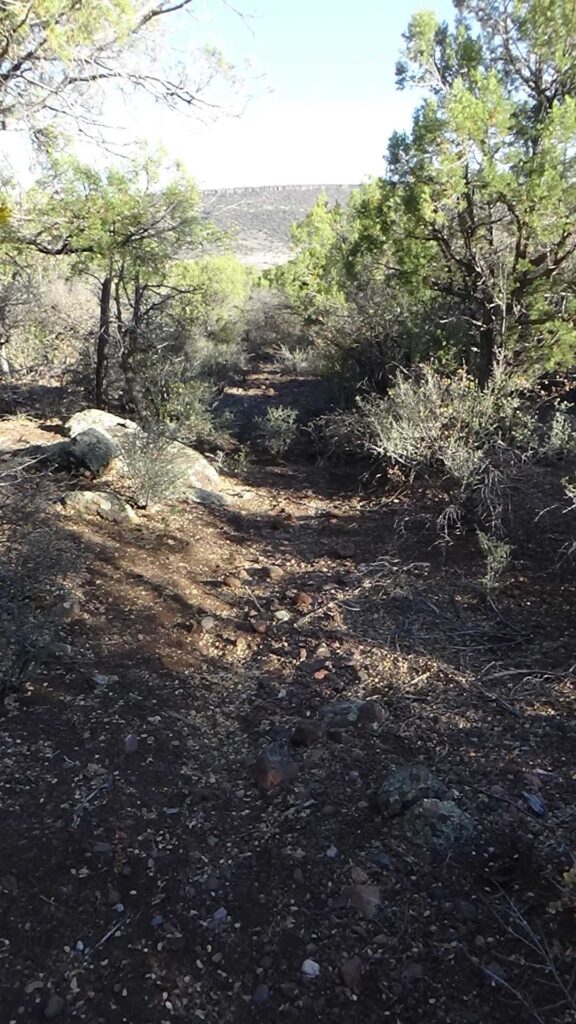
Why Is There So Little Archaeological Scholarship on Trails?
AW: Well, it comes down to the archaeologists. What I mean is, the broader archaeological discipline and the community of trained professionals who constitute it determine, through practice and prose, what is and is not important about the past. From the disciplines’ foundation, the concern has been for, first and foremost, artifacts and antiquities, and secondly “sites.”
Trails sort of defy both concepts, and so they’ve not risen to significance in the consciousness of the archaeological profession. Archaeology has long had a predilection for studying where people were, when, and why—the nuts and bolts of culture history. Trails are one of the natural connections between those chapters in the story, but it seems that the broader discipline hasn’t been ready to turn the page on archaeological sites to examine them in relation to one another via the lines that connect them.
Lastly, few archaeologists are trained in trails archaeology. It is a very niche space in the discipline, and without training or experience in the visual identification and mapping of trails, most archaeologists are very likely to walk right over these generally ephemeral aspects of the archaeological record. It’s just so different than what most of us are familiar with.
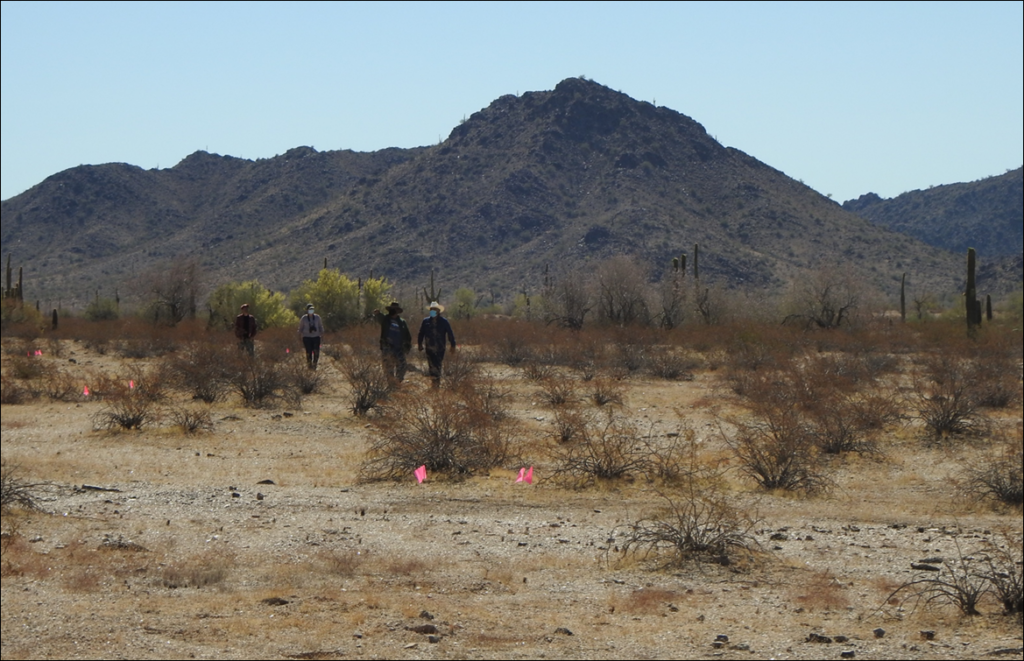
JRW: I see three main reasons for the dearth of studies on heritage trails, each of which is associated with the other two. First, there’s not much evidence to really dig into. Old trails are rare and getting rarer. Indigenous trail networks have been and are being co-opted and obliterated by industrial infrastructures around the world. Most are already gone, and all are endangered.
Second, most trails fieldwork is a combination of high risks and low rewards. Old trails are hard to find, follow, assign dates to, and interpret in terms of function. In Apache Territory across east-central Arizona, there are few artifacts or features associated with trails. A big day means finding a couple of pieces of chipped stone or potsherds in alignment with a natural travel corridor and a cairn or rock pile. Especially in the mountains, where ground surfaces are dynamic, there’s no reasonable expectation of finding much by way of clear material indicators of old trails.
Third, most successful trails research requires the extra effort of interdisciplinary coordination and community engagement. The work generally rests on guidance from regional knowledge-holders and local experts. Finding an Indigenous rancher who will take time for trails talk is the gold standard! The integration of remote sensing technologies, local knowledge, ethnographic records, and rigorous pedestrian surveys are the only proven means for documenting trail networks on regional scales. So far, only a few archaeologists and heritage professionals have been interested in training themselves and working across social and academic boundaries to identify, document, and assess the significance of heritage trails.
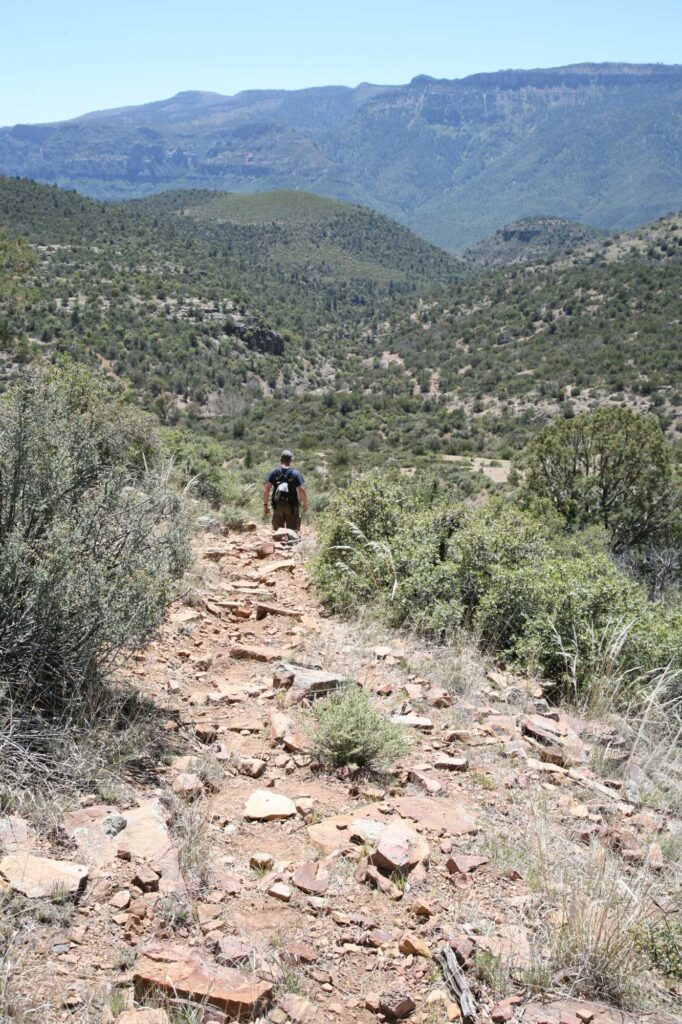
What Do You See as Promising Catalysts and Directions for Trails Archaeology?
JRW: Indigenous Peoples appreciate and are beginning to advocate for more and better studies of trails. Government officials, professional archaeologists, and proponents for land alterations are beginning to listen to Indigenous experts and to appreciate trails as links, both literal and metaphorical, among times, places, supplies, markets, and cultures.
On the technical side of things, least-cost path analyses enabled by increasingly sophisticated geographical information systems can really help researchers focus on where to conduct our “ground truthing” field work. These GIS applications allow queries about the most energetically efficient routes for human travel between known communities, materials sources, and other landscape hotspots. This line of inquiry is especially promising in mountainous regions. Where the computers tell you there should be evidence for intensive travel, or where you find evidence for intensive travel that the computers did not predict, you have an especially interesting research question to pursue.
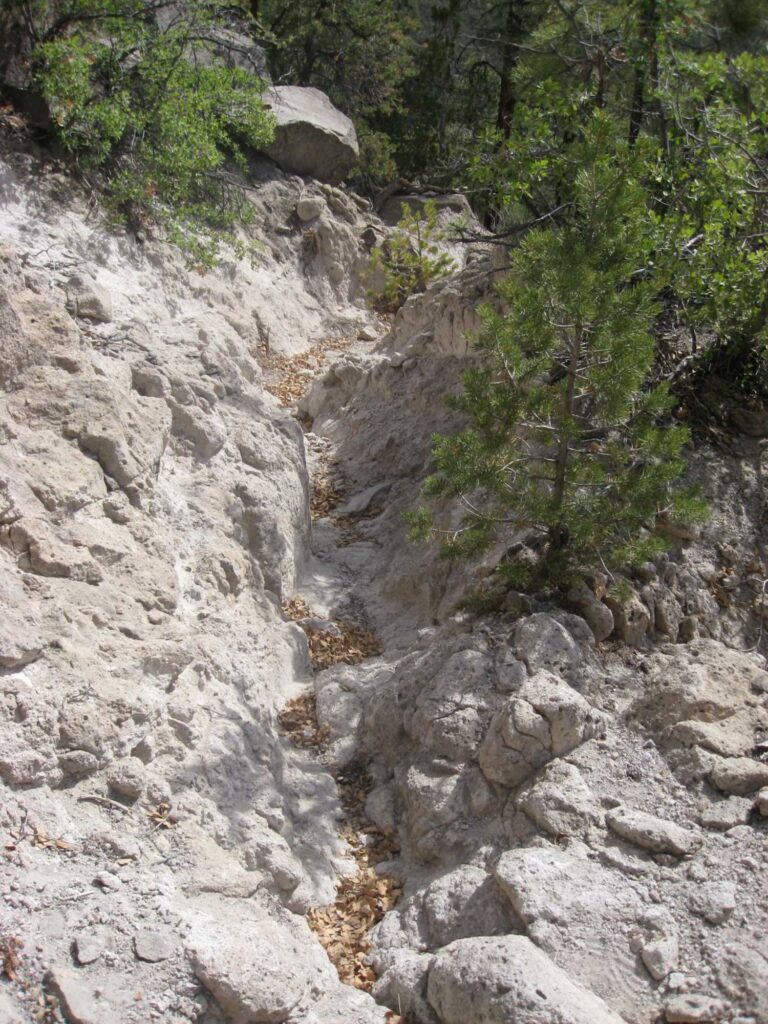
AW: I see the principal catalyst for trails archaeology being advances made in broader federal legislation and policy regarding cultural resource management and historic preservation. Just two years after passage of the National Historic Preservation Act, which really established the nation’s protocols for historic preservation, Congress passed and President Johnson signed the National Trails System Act. Although largely a recreational program administered by the National Park Service (NPS), Congress amended it in 1978 to include National Historic Trails (NHTs) as a way to preserve and celebrate remnants of routes and associated sites significant and important to the nation’s history can identity. The earliest such designations were routes associated with the nation’s legacy of colonialism and Manifest Destiny, such as the Oregon NHT and the Lewis & Clark NHT.
This trend in trails designations culminated with designation of the Butterfield Overland NHT, established in January of this year. It, as well as the Juan Bautista de Anza NHT, cut through the Great Bend of the Gila, so I’ve become quite familiar with these trails in the course of my research. I want to emphasize that these two trails, and I suspect most other NHTs, are actually Indigenous trails that were repurposed by agents of colonialism.
I believe the NPS is poised to acknowledge the lack of prior attention to Indigenous trails and to invest in research and education to balance out NHT designations. I also see opportunities for our congressional representatives to do more to include Indigenous trails in the NHT system. As of mid-2023, only two NHTs—the Trail of Tears (Cherokee) and Nez Perce NHTs—are specific to the nation’s Indigenous communities. NPS completed the feasibility study for the proposed Long Walk NHT (Diné [Navajo] and Ndee [Apache]) in 2009.
The regrettable truth here is that all three of these Indigenous trails are more like memorials than celebrations; each commemorates forced relocations of Indigenous Peoples from their Territories at the points of U.S. Army rifles and bayonets. Nevertheless, the National Trails System has helped shine a light on the significance of roads and travel routes in what it means to be an American.
Secondly, establishment of the National Conservation Lands System (NCLS) by President Clinton in 1996 (thank you, Arizona Governor Bruce Babbitt) enables Congress and/or the President to protect landscape-scale parcels of public land. This system includes not only the NHTs described above, but also national monuments, national conservation areas, and wilderness areas, among others. Because trails connect other archaeological and historic properties into complicated mosaics around which is it difficult to define suitable and appropriate boundaries, the landscape-scale designations afforded by this program facilitate the protection of trails that would otherwise be overlooked or ignored by land managers and State Historic Preservation Officers, many of whom lack requisite expertise in trails archaeology.
My work on the Komadk Trail in the Sonoran Desert National Monument is a case in point. It had actually been “clipped” by four previous cultural resource surveys for a series of powerlines that intersect it. The investigations conducted for planning those projects failed to recognize the discontinuous streaks of sherds, flakes, and rock piles across the landscape as trail alignments. The materials were documented as small artifact scatters and isolated features having little significance. It was only when those scatters were tracked out, far beyond survey areas within the powerline right-of-way corridors, that the true nature and composition of the Komadk Trail emerged as a major travel and trade corridor linking Indigenous communities in the middle Gila River Valley with allies and kin along the lower Gila, and beyond.
In the case of the Mojave Trails National Monument, established by President Obama in 2016, the ancestral trails of the Mojave and Nuwuvi (Chemehuevi and Southern Paiute ) are actually called out as contributing elements to the monument’s significance. This is one of the few—if not only—cases where Indigenous trails are recognized as “monument objects” in a presidential proclamation.
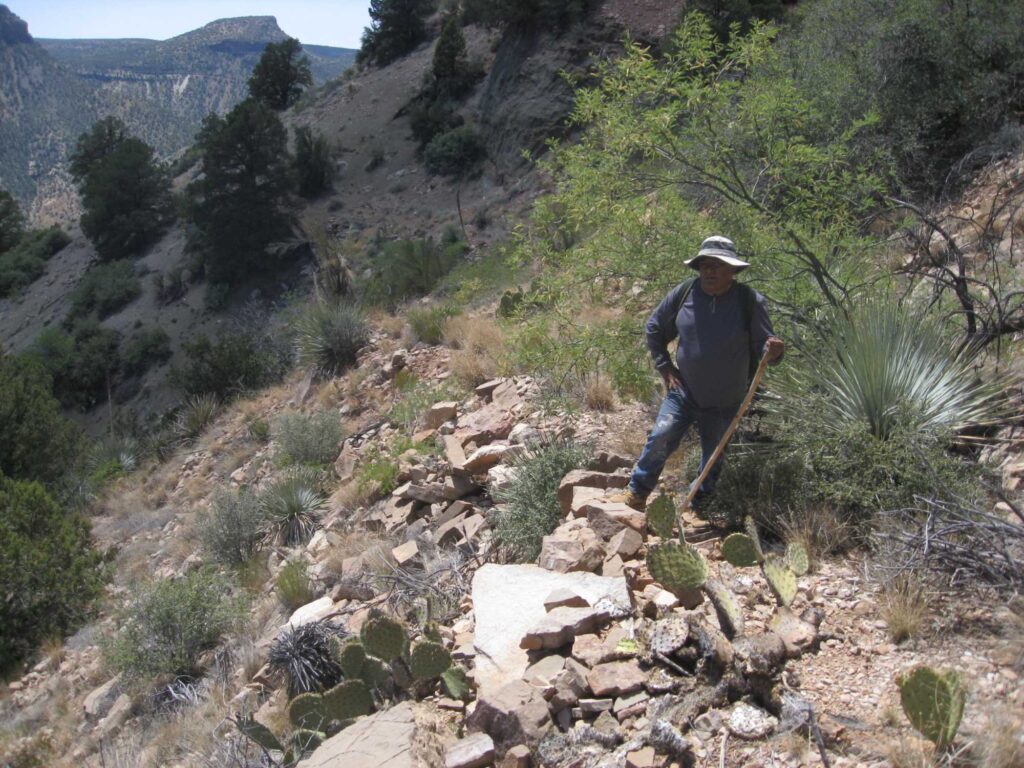
Finally, the NPS’s formulation in 1992 of Traditional Cultural Properties (TCPs) as a class of property eligible for listing to the National Register of Historic Preservation has been a game-changer for trails archaeology. When people hear “National Register,” they often think of quirky old buildings or archaeological sites of varying composition. These are the kinds of places generally valued by historians and archaeologists, and typically less so by people from under-represented communities. TCPs represent the NPS’s interest and effort to recognize, celebrate, and protect places important to traditional communities that might not be valued explicitly by historians, architects, archaeologists, and others. Perhaps most importantly, TCPs need not be buildings or archaeological sites. They can include landforms, bodies of water, areas comprised of important materials sources, or trails, including trails that lack associations with artifacts and other material indicators.
Trails are a natural fit within the TCP classification. As I noted above, some archaeologists fail to recognize the true nature of these types of properties. And if they do, they may not regard them as anything more than loose assemblages of artifacts and rock features whose excavation would have a low probability of yielding information beyond what is visible on the ground surface. But their significance might be very different to the descendants whose ancestors have used them since time immemorial.
In fact, many trails have little-to-no archaeological trace. They might be recognized by just a few artifacts, as John witnessed above, or known only through oral traditions or personal experiences. Such phenomena would probably not even qualify as archaeological sites to most land managers, so they cannot be assured recognition or protection as such. A TCP designation allows such places to be treated on par with more clearly discernable cultural and historical properties.
That some Indigenous communities regard trails as TCPs ensures that the practice of trails archaeology will not only continue, but also improve over time as Tribes carry out TCP inventories on public lands. These are meaningful and exciting times for trails archaeology and collaborative work with Indigenous and descendant communities.
One thought on “On the Trail of Trails: A Dialogue”
Comments are closed.
Hello, I am fascinated by the concept of trails archaeology. I am a long time backpacker and hiker and would love to be able to contribute to the effort – if you would like some free labor! I have done numerous PIT survey projects in Utah, Wyoming, Colorado, and lived in Arizona. My strengths are land navigation, gps and map and compass work. Although I am 75, I am still in good hiking shape. I’d love to help the effort!